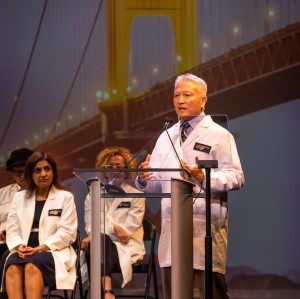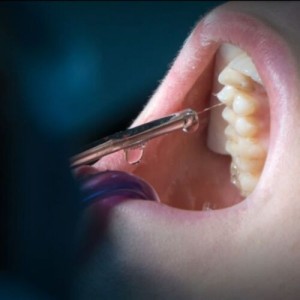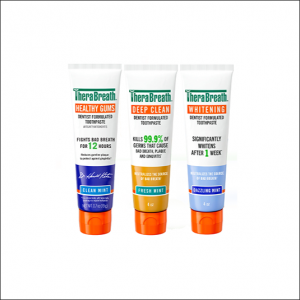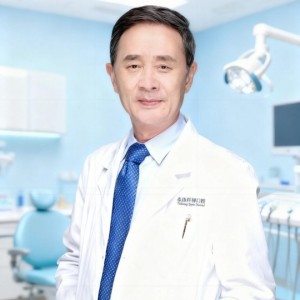
What to expect next: The Shape-Memory Polymers
Lorenzo Breschi
In the past years, traditional dentistry, has been attracted by inert material that do not interact with the oral environment, present no changes in their structure and/or properties over time and cause minimal biological response, even after long period in the oral cavity. Today, interdisciplinary research is currently focusing on materials able to undergo modifications in their structure and play an active role when placed in the mouth. Some of these materials, known as “smart” materials (SMs) or “(stimuli-) responsive” materials (SRMs), have a high capacity to sense and react according to environmental changes or external stimuli, and under some specific input, they produce a predictable and repeatable response or output.
Among SMs, the so called “shape-memory materials” are of great interest thanks to the ability to change their macroscopic shape in presence of a proper stimulus and the numerous applications in the dental field. Indeed, the shape-memory properties typifies a distinctive feature of a multiplicity of materials: alloys, polymers, ceramics and gels. The shape-memory effect is defined as the materials’ capacity to be deformed and fixed in a temporary or a dormant shape, which remains stable until the material is exposed again to an appropriate stimulus. In dentistry, since the introduction of nickel-titanium (NiTi), shape memory metal alloys, represented a recognized paradigm shift. Recently, the introduction of shape-memory polymers (SMPs) have exercised great attractiveness as a consequence of their significant elastic deformation ability, low cost, low density (which results in lightweight), ease of production and processing, tailorable physical properties, excellent chemical stability, biocompatibility and even biodegradability.
A recently published review by Dr. A. Bruni and his team from the University of Torino, gives an overview of the available dental application of SMPs, with an appraisal of existing literature and research, as well as technological monitoring based on invention patents and concepts and trends with potential dental applications. In the present review a computerized database search was performed by two authors, on January 21, 2019, to detect all peer-reviewed articles and patents regarding data on the use of shape-memory polymers in dentistry. Of the 302 articles and 497 patents initially selected a total of 6 papers and 45 patents respectively were included in the research. Orthodontics was the field of application with the largest number of patent registered, but SMPs are an exciting subject of investigation also in prosthodontics and restorative dentistry. In prosthodontics, the research aspires to optimize the daily practice through the reduction of chairside time and the improvement of patient’s experience. Between various applications, provisional fixed and removable prosthesis deserves special attention. Provisionals are fundamental to provide soft tissue healing and conditioning, proper occlusion and acceptable esthetic, however, they recurrently suffer from inadequate fitting. To solve the problem, a patent proposed a pre-fabricated crown, molded with shape-memory resin and placed over the tooth abutment, to create a provisional restoration.
The peculiar feature of this restoration is the perfect adaptation and fitting with the abutment surface without the interposition of the cement. After an initial deformation of the material obtained with temperature changes, the provisional crown binds to the abutment firmly, without further adaptation of the material. Complete dentures often require relining their internal surface to improve their stability and adaptation to the residual ridge. Relining can be done directly in the mouth or indirectly by the dental technician. Direct relining in the mouth is a fast procedure, however, potential oral mucosa irritation, heat developement during the curing of the material and a weak bond between the reline material and denture base are still unsolved issues. SMPs lining for dentures could be an attractive alternative to direct relining as they can progressively adapt to the mucosa and the denture remains stable with minor patient discomfort and reduced need for periodic recalls. As regard restorative dentistry, the research is focused on the development of materials and techniques that mimic natural dentition. Color and aesthetics of teeth play a remarkable role in patient’s acceptance of restorations and selecting the correct shade to maximize the reproduction of natural teeth appearance is crucial for clinicians. The development of a composite material with the combination of a shape-memory ability and an optical change capability in response to selected stimulus might be a breakthrough in the field of dental materials. The authors of the review conclude that although the application of shape-memory polymers in dentistry is still limited due to the lack of a commercial suppliers of dental materials, academic and inventors showed an increasing interest in testing the potential uses SMPs.
It is important to notice that, together with the progression towards precision in dentistry, material science is also moving forward to a fully customizable path. In this scenario, the rise of shape-memory polymers, with their high possibility of customization, seems to be future of the dental production and development.
 Tag
Tag
 Related articles
Related articles
Editorials 22 April 2024
If there were an indicator for change in music, this would be off the charts if it wanted to measure how many and what changes Miles Davis has made since, at eighteen, he was enlisted, almost by...
Editorials 10 October 2023
Research is an endless quest. That’s why it has always fascinated Georgios Kotsakis. The moment he figures out an answer, he feels a new question he needs to creatively tackle pops up.
Editorials 31 December 2021
Dear readers,The approach of New Year is usually a festive period and, for some of us, an occasion to look back and sum up our impressions of the year that we are about to leave behind. We can...
Editorials 08 October 2021
Dear Dentistry33 readers,After a long period without the possibility of meeting collogues and friend in person, I am finally pleased to present you the 22nd Annual Congress organized by the Italian...
Editorials 04 August 2021
It has been approximately one and a half year since the Covid-19 pandemic changed the course of the world and influenced the lifestyle of many people, regardless of their background and profession....
 Read more
Read more
Editorials 10 October 2025
With proud smiles and crisp white coats, ninety-three learners from the DDS Class of 2029 and the International Dentist Pathway Class of 2028 marked the start of their dental careers at the UCSF...
Periodontology 10 October 2025
Continuous professional development (CPD) in Periodontology refers to the overall framework of opportunities that facilitate a life-long learning practice, driven by the learner-practitioner and...
TheraBreath, the #1 alcohol-free mouthwash brand in the U.S.*, has introduced a new line of dentist-formulated, clinically tested toothpastes designed to support professional oral care...
News 10 October 2025
New officers and trustees were installed at the Minnesota Dental Association’s Leadership Conference on September 19 in Minneapolis.
News 10 October 2025
Smartee Denti-Technology today announced that Professor Gang Shen, its Chief Scientist and Executive President of TaiKang ByBo Dental, has once again been named to the World’s Top 2% Scientists...















